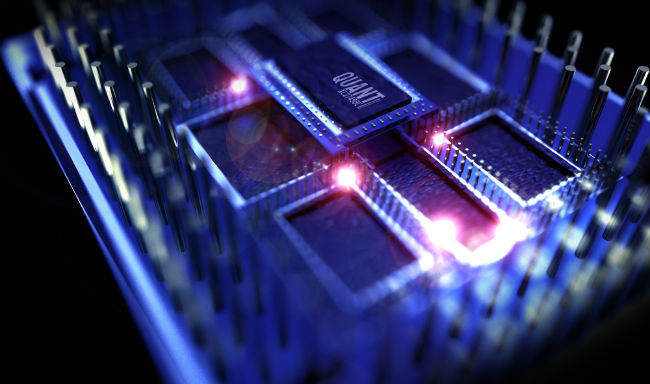
Chinese scientists won a major victory recently, by proving that the Majorana fermion — a particle we’ve found tantalizing hints of for years — genuinely exists. This discovery has huge implications for quantum computing, and it might change the world. But how?
What Is A Majorana Fermion?
A Majorana fermion is weird even by the standards of quantum physics. If you remember your high school physics, you remember that atomic particles like protons and electrons have a charge, positive or negative. The Majorana fermion, however, doesn’t have a charge, which allows it to be matter and anti-matter at the same time. Yes, that is incredibly confusing, even to quantum physicists, and they’re still arguing over how that even works.
The fact that it doesn’t have a charge, and also happens to be the exact reverse of itself at the same time, has made these little buggers a pain to find. Finding evidence they even exist required absurdly elaborate experiments. But found them we have, and now it’s a question of how, and whether, we can use them.
Why Are Majorana Fermions So Important?
Aside from the fact that their existence proves that we so far haven’t gotten anything horribly wrong with this “quantum physics” thing, the most important impact is potentially on quantum computing. To understand the computer you’re reading this on, all you really need to know are two numbers: One and zero. At root, your computer is just a huge string of light switches where those switches are either on (one) or off (zero). Your web browser is just a set of instructions, and the switches are flipped on and off in a specific sequence, millions of times a second.
Quantum computers, however, are like a huge pile of dimmer switches. They’re not limited to just “on” and “off.” You can turn some of them up a bit, leave some almost off, and so on. Not only that, you can set these dimmers much, much faster than you can flip on these light switches, because the dimmers are all wired to each other. You just have to set one, and the billions of others will flip right to the state you want immediately. These dimmers, a.k.a. quantum bits, are what’s called “entangled.” If you change one quantum bit, the others it’s entangled with change with it, even if they’re a million miles away from each other.
The problem is that once you set these dimmers, that’s it. You can’t have a record of what came before. In other words, you can have the computer, but you can’t necessarily have any software to go with it. If you loaded your web browser onto a quantum computer, it wouldn’t work.
That’s where Majorana fermions come in. Due to their no-charge nature, they leave behind what amounts to a series of notes about how they changed position. So we can, in theory, arrange them the same way every time and get the same result every time.
The Roadblocks Ahead
However, there are still some substantial problems. While we’ve made some enormous advances, a lot of this is still theoretical and there may be aspects of quantum mechanics that we haven’t even seen yet. Probably the biggest challenge is figuring out how we’ll even get this into what we’d recognize as a computer in the first place. It’s very early days for building quantum computers, and some problems of quantum physics are difficult to lick.
Even if we do crack it, it may never be in your laptop. The real power in quantum computing lies in doing operations and experiments that would take decades or even centuries with a digital computer being done in days or weeks. For example, right now, it is literally faster and cheaper to run high-level physics experiments by building something like the Large Hadron Collider, which is basically a circle seventeen miles around that we fire energy beams through to smash together two tiny little pieces of matter. That generates a mountain of data that takes 170 industrial computing facilities in 36 countries months to sort through and figure out what it actually tells us.
With a quantum computer, you could do that with one computer, at least in theory. In fact, you could create a simulation of the Large Hadron Collider and just run that from your desk. And the same is true with any operation involving physics. With quantum computers, even tiny state schools could have a Large Hadron Collider of their very own, and they wouldn’t have to dig out anything other than some room in a lab to do it.
On a day-to-day level, quantum computing would allow us to analyze the data we’re collecting at speeds we can’t dream of now. Collecting data is easy, we generate mountains of it daily. But analyzing that data and making it useful is an increasing challenge. Quantum computing will take everything from looking at traffic data to examining how we eat as a nation and make searching that data as simple as Googling it. It will put the relevant information from the gigantic cacophony we are now creating with our Fitbits and our smartphones, with Facebook and our laptops, and let us put it to use.
We’re a long way away from all that, and there are concerns to address. But with the Majorana fermion discovered, that reality is tantalizingly close.






